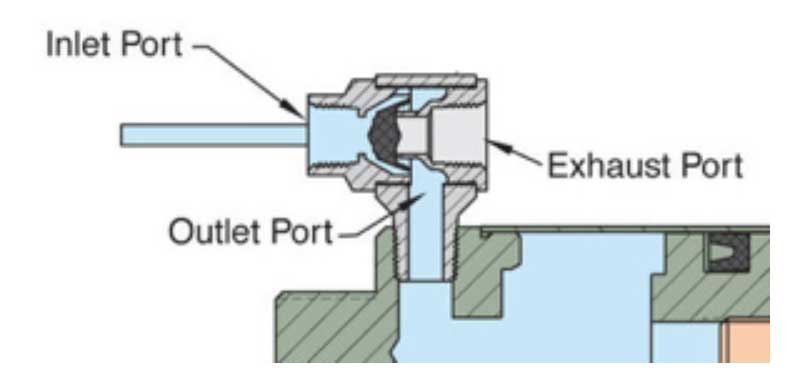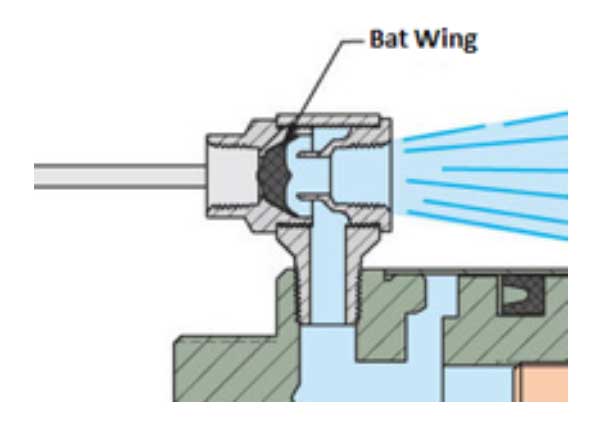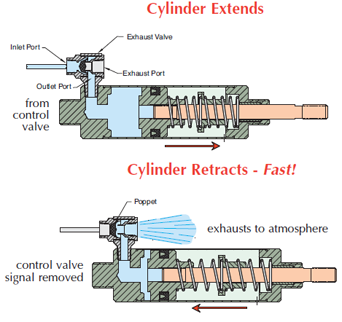How Does a Quick Exhaust Valve Work?
How Does a Quick Exhaust Valve Work?
Quick exhaust valves work by providing a rapid exhaust of controlled air when placed directly onto an air cylinder after the control valve. The seal inside Clippard's quick exhaust valve is shaped like a bat wing. When air pressure is sent to the cylinder, it hits the back side of the seal and pushes the front side against the exhaust port. This seals it off and allows air to enter the cylinder.
When the control valve is shifted, the bat wing design of the seal begins to catch the exhausting air and shifts itself over to block off the original inlet. This allows all the exhaust air to immediately dump out the exhaust port.
Quick Exhaust Valves in Cylinder Applications
In a typical application, the exhaust valve is installed in the inlet of a spring return or double acting pneumatic cylinder. Supply air from a control valve is directed into the inlet port of the exhaust valve. The nitrile poppet seals the exhaust port and allows air to flow from the outlet port of the valve into the cylinder. The pressurized air then pushes against the piston and extends the rod, compressing the spring, until full rod extension is achieved.
When the control valve exhausts air from the exhaust valve inlet port, the nitrile poppet shifts to seal the inlet port and open the exhaust port to the cylinder. The pressurized air is then allowed to exhaust directly through the exhaust valve to atmosphere. Normally the air must travel back through the long air line to the control valve to exhaust. However, by mounting the exhaust valve directly on the cylinder, the piston retracts quickly since the distance to atmosphere is very short and unrestricted.
Related Content








